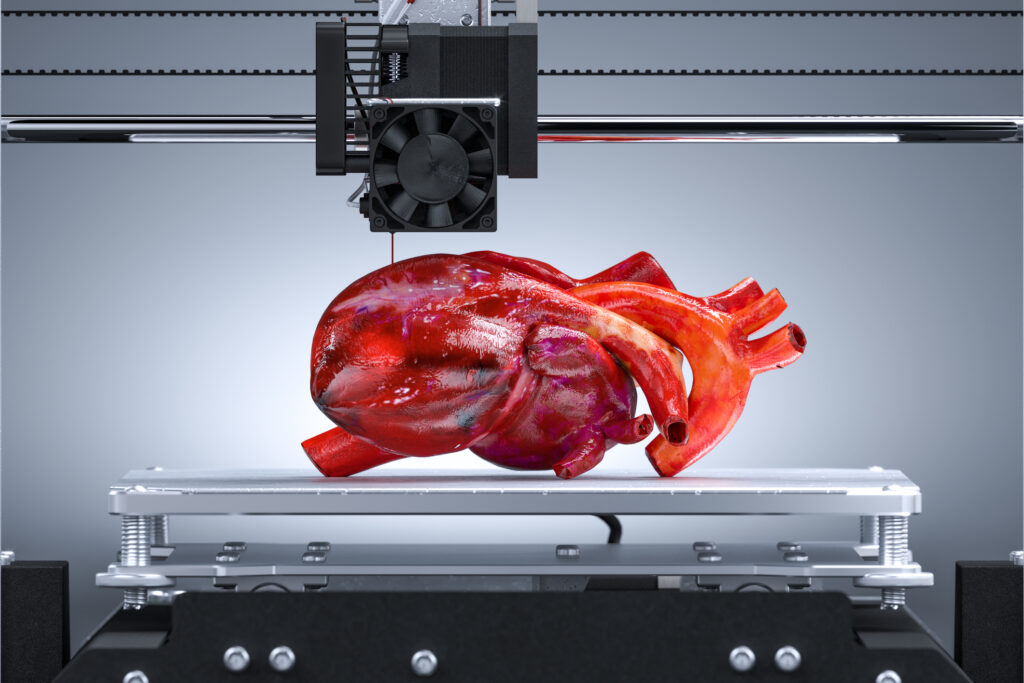This article is intended for research and educational purposes only. Epithalon and related peptides are classified as research materials and are not approved for human or veterinary use.
The analytical study of tetrapeptide analysis continues to shape molecular research frameworks, offering structured insight into folding, stability, and reproducibility. Within this context, Epithalon stands as a benchmark tetrapeptide model, bridging analytical chemistry with telomere-linked molecular investigation.
The evolving landscape of peptide research emphasises precision and transparency. Scientists no longer rely solely on theoretical predictions—they verify structure and kinetics through quantitative spectroscopy, molecular modelling, and thermodynamic validation. These techniques, when applied consistently, strengthen the reproducibility of peptide-based data and refine modern interpretations of peptide structure and stability.
Foundations of Tetrapeptide Analysis
What Are Tetrapeptides?
Tetrapeptides are the simplest units capable of forming stable secondary motifs and hydrogen-bond networks. Their limited length allows for precise computational analysis while maintaining meaningful chemical behaviour. Each sequence variation can alter folding pathways or solubility profiles, making tetrapeptides indispensable for controlled experimentation in both academic and industrial research settings.
Laboratory Relevance
Analytical chemists utilise tetrapeptides to test hypotheses on stability, molecular geometry, and sequence–activity correlations. Because these short peptides are predictable, they provide measurable reference points for validating instruments like HPLC and FTIR. Moreover, they offer reproducible models for comparing solvent interactions, degradation rates, and peptide bond resilience under defined conditions.
Epithalon: A Model for Analytical Study
Structural Insight
Epithalon comprises four amino acids—alanine, glutamic acid, aspartic acid, and glycine—arranged in a linear tetrapeptide chain. This configuration allows scientists to examine how side-chain polarity and charge influence folding dynamics and molecular alignment. The clarity of its sequence makes Epithalon a preferred candidate for repeatable laboratory studies on peptide integrity.
Analytical Validation and Telomere-Linked Context
Validation of Epithalon synthesis often employs LC-MS and NMR spectroscopy for sequence confirmation and purity assessment. Analytical research also references telomere-linked molecular frameworks to understand peptide-driven stability mechanisms. A widely cited publication illustrates this context by documenting induced telomerase activity and elongation processes within controlled somatic cell environments.
Expanding Analytical Depth
Beyond structural validation, modern tetrapeptide analysis involves exploring solubility gradients, chromatographic retention trends, and molecular docking simulations. Researchers assess how ionic strength and buffer composition impact conformational mobility—factors that dictate peptide performance in analytical trials. Consistent methodology allows laboratories to build cross-comparable datasets across independent studies.
Analytical Techniques Defining Tetrapeptide Research
Chromatography and Mass Spectrometry
High-performance liquid chromatography (HPLC) remains indispensable for separating peptides and identifying degradation signatures. Mass spectrometry complements it by determining molecular weight and fragmentation profiles with unmatched precision. The synergy of HPLC–MS allows researchers to monitor purity, detect by-products, and confirm the reproducibility of synthetic protocols.
Practical approach: establish chromatographic reference peaks for newly synthesised tetrapeptides, store results in shared databases, and monitor changes during long-term sample storage. This workflow helps identify deviations early and ensures data reliability across teams.
Spectroscopy for Structural Analysis
Spectroscopic methods like NMR, FTIR, and CD spectroscopy provide insights into folding patterns and hydrogen-bond configurations. They quantify the presence of α-helices or β-turns even in small peptides. CD spectroscopy, in particular, reveals the influence of environmental stressors such as pH or temperature on peptide stability. These insights are critical for understanding peptide structure and stability at an atomic level.
Computational Simulations and Predictive Modelling
Computational tools now integrate quantum mechanical calculations with classical molecular dynamics (MD) simulations. This hybrid modelling enables accurate prediction of conformational preferences, solvent interactions, and energy minima. By aligning computational predictions with empirical data, scientists can validate hypotheses before synthesis—reducing both cost and time.
In this stage of research, models often incorporate cross-comparisons with other tetrapeptides or analogues categorised under the term Researched Peptide. Such comparative modelling highlights structural dependencies, offering broader insight into peptide classification systems and their analytical performance indicators.
Expanding the Role of Researched Peptides
Comparative Insights Across Peptide Families
Every Researched Peptide contributes unique information about amino-acid sequence effects, molecular rigidity, and stability potential. Comparative datasets help establish correlations between structure and experimental outcomes. A recent open-access study demonstrated this concept by exploring the sequence characteristics and mechanisms of various tetrapeptides.
Integration in Analytical Frameworks
Incorporating multiple peptide analogues in a unified study promotes better reproducibility and method validation. Researchers can identify conserved stability markers or reaction pathways by comparing structurally related tetrapeptides. These findings also assist in standardising chromatographic and spectroscopic procedures across laboratories, forming a stronger foundation for multi-lab peptide analytics.
Expanded Research Context
Beyond their analytical purpose, researched peptides allow teams to evaluate emerging instruments and computational workflows. By testing small, controlled peptide samples, analysts can verify sensitivity, reproducibility, and data precision of equipment. This iterative feedback process enhances experimental consistency while enriching global databases with high-fidelity reference results.
Structural Dynamics and Environmental Stability
Measuring and Maintaining Stability
Understanding how tetrapeptides respond to environmental changes remains central to analytical success. Each variation—temperature, solvent, or light—introduces new variables that affect both chemical and structural integrity. Laboratories often perform temperature gradient tests and multiple freeze–thaw cycles to map degradation thresholds accurately.
Data Reproducibility in Practice
Generating reproducible data requires robust documentation. Researchers maintain version-controlled laboratory notebooks, record analytical parameters, and apply standardised calibration curves for all optical instruments. Such precision ensures that tetrapeptide analysis remains transparent and auditable across teams.
Ethical and Methodological Integrity
All peptide studies must adhere to research-only compliance. Laboratories operate under rigorous quality systems, ensuring that data collection and interpretation are purely analytical. These methods strengthen scientific credibility while preserving ethical standards.
Emerging Trends and Future Directions
AI-Driven Pattern Recognition
Artificial intelligence increasingly supports peptide analytics. By evaluating large sets of chromatographic and spectroscopic data, algorithms detect patterns correlated with stability and degradation trends. This predictive capacity helps prioritise confirmatory tests, improving efficiency without compromising accuracy.
Nanotechnology Integration
Miniaturised devices like lab-on-a-chip platforms enable analysis of microliter-scale peptide samples. Combining electrophoretic separation and optical detection, these systems reduce reagent consumption and accelerate data turnaround. They align with sustainability goals while offering fine-tuned analytical control.
Hybrid Experimental–Computational Systems
Integrating in silico simulations with real-world analytics bridges the gap between prediction and observation. Researchers can now anticipate conformational transitions and cross-check predicted IR or NMR spectra with actual readings, refining accuracy across all dimensions of molecular analysis.
Practical Guidelines for Reliable Results
- Validate peptide identity using LC-MS/MS and record retention times for traceability.
- Compare CD and FTIR spectra before and after stress conditions.
- Store under an inert atmosphere to prevent oxidation or hydrolysis.
- Adopt multi-method verification for every analytical conclusion.
Conclusion
In summary, tetrapeptide analysis provides a robust framework for exploring molecular precision and reproducibility. Through compounds like Epithalon and comparable Researched Peptide models, laboratories can deepen understanding of structure–stability relationships and advance the reliability of analytical chemistry.
Each validated dataset contributes to a global foundation of measurable, evidence-based peptide science. By combining spectroscopy, chromatography, and computational prediction, researchers continue to elevate molecular analytics while adhering to ethical standards.
Disclaimer
The content presented in Exploring Epithalon in Modern Tetrapeptide Analysis by Open MedScience is intended for educational and informational purposes only. It provides a scientific overview of analytical methods and molecular studies related to tetrapeptides, including Epithalon, within legitimate research frameworks.
Open MedScience does not endorse, promote, or encourage the use of Epithalon or any other peptide for self-administration, therapeutic, cosmetic, or performance-enhancing purposes. Any references to synthesis, analysis, or laboratory procedures are provided exclusively to support scientific understanding and professional laboratory practice under appropriate regulatory compliance.
Epithalon and related compounds discussed in this article are classified as research-only materials. They are not approved by the UK Medicines and Healthcare products Regulatory Agency (MHRA), the European Medicines Agency (EMA), the US Food and Drug Administration (FDA), or any other regulatory authority for human or veterinary use. The handling, storage, and disposal of such materials must be conducted by qualified personnel within certified facilities that comply with institutional and legal safety requirements.
The article does not constitute medical, pharmaceutical, or clinical advice. Readers must not interpret the information as guidance for diagnosis, treatment, prevention, or mitigation of any disease or condition. Open MedScience and its contributors disclaim all liability for misuse, misinterpretation, or unauthorised application of the information provided.
All experimental approaches and data references mentioned are illustrative and based on published research within controlled scientific environments. Readers are encouraged to consult relevant institutional protocols, material safety data, and governing legislation before undertaking any experimental work involving peptides or peptide analogues.
You are here: home » diagnostic medical imaging blog »



